Isuzu D-Max review and buyer’s guide
The Isuzu D-Max promises reliability and grunt for towing, touring and off-road adventures. But paying a premium for one could have consequences. Just because this dual-cab diesel 4X4 is popular, that doesn’t make it perfect.
The Isuzu D-Max has earned a reputation that was built for it by most car reviewers, one that is generally overwhelmingly positive.
But just because it has four-wheel drive doesn’t make it the best tool for the job, let alone the best value tool.
Buying any serious off-road ute like the D-Max is fraught with carmaker cliché, marketing hype and plenty of colourful pictures telling you to beat the wilderness into submission by buying their notionally indestructible truck.
D-Max is not that, and it’s hardly a truck.
But what are its deficiencies and what are the consequences of buying one? In this review, you’ll get both the good and the ugly truth about the third most popular dual-cab ute in Australia.
The D-Max is often regarded as the most trustworthy ute on the market, with common perceptions and so-called independent survey results pointing to superb long-term reliability and user-friendliness.
However, it does lack technology and it’s not exactly interesting compared with some rivals. Is it the right ute for you?
The D-Max sits in a fiercely competitive class, with many rivals presenting a variety of options, ranging from nifty premium packs to extensively-modified off-road specials. Isuzu doesn’t really do much in either direction here, but instead goes its own way (pun intended) by remaining relatively straightforward.
In 2024, Isuzu D-Max was the third best-selling ute in Australia behind the Toyota HiLux and Ford Ranger, according to VFACTS. That’s against a line-up of 16 hungry contenders, including those humongous American pick-up trucks. During 2024, the D-Max was also the sixth best-selling vehicle model outright in Australia with 24,031 sales.
Mitsubishi Triton has a new model, so make sure you look at that as well, because the price alone is good enough reason to. Just for context, the Isuzu MU-X also sells pretty well against Ford Everest, Toyota Fortuner and Mitsubishi Pajero Sport.
so it must be acknowledged that the Isuzu D-Max is very popular in Australia. In 2024 it was a top 10 contender for sales behind Toyota Hilux and Ford Ranger, and constantly mixing in with the Toyota LandCruiser among others.
D-Max sold 25,443 units in dual-cab 4X4 form. Only Hilux beat it on 48,995 sales and Ranger on a whopping 58,261 sales, making it the most popular vehicle outright in Australia. Not having Triton do particularly well last year with just 13,000 sales behind even the Mazda BT-50 on 14,000, this mean D-Max was a hot seller.
But by the end of August in 2024, D-Max is still selling well on 16,000 units, but it’s even further behind the Hilux on 32,900 and Ranger on a staggering 40,000 sales - and it’s 22 per cent down on the same period in 2023.
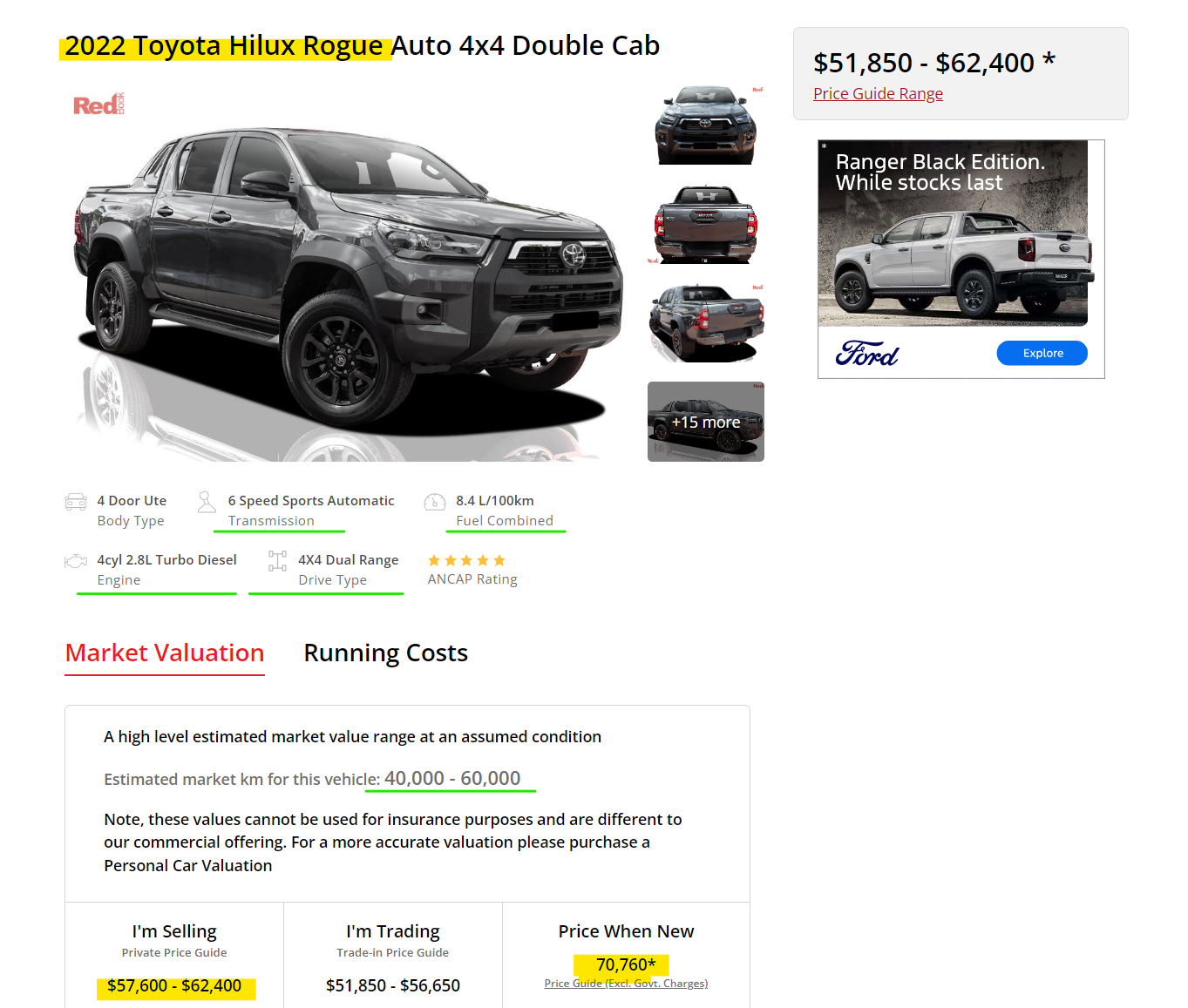
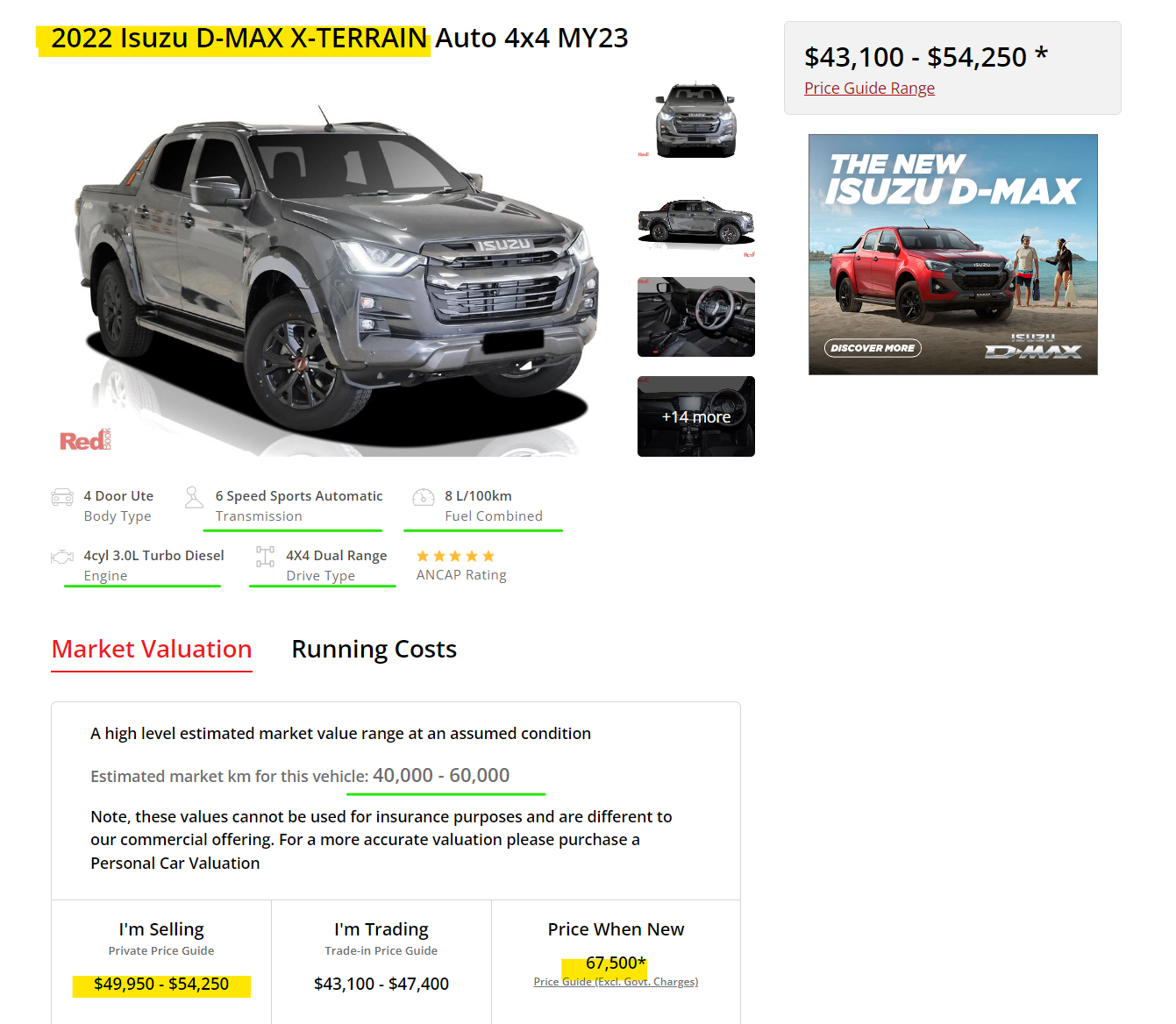
So what do all these numbers mean? D-Max could be on borrowed time for its sales dominance given that LandCruiser, Hilux, and even Ranger are all significantly down in the sales compared with 2023. What it suggests is a possible glut in the market, especially with the Kia Tasman arriving in 2025, the newly arrived GWM Cannon, the BYD Shark making a splash in October 2024, and the MG ute expected in 2025-26.
Where Hilux has typically been the resale value king of the utes, D-Max is doing surprisingly well. An MY2022 D-Max X-Terrain, according to Redbook, has lost about 19 per cent of its value in those two years (going from $67,500 new to 54,250 private resale). Comparatively, the Hilux Rogue in that time has lost 11 per cent of its value (from $70,700 to $62,400).
Despite it being a clear victory in depreciation to the Hilux, remember that one had to pay a $3000 premium for effectively the same vehicle at that time. Same capability in the drivetrain, same towing capacity, same payload, same number of seats, same fuel economy and both with the same estimated number of kilometres on the odometer.
Some refer to that Hilux premium as the ‘Toyota Tax’ for a reason - you’re paying for the name and reputation. But it’s hardly as if the Hilux 2.8 has been perfect over the years, and it’s a 10-year-old platform as of 2025, whereas the D-Max is only three years young. Albeit it with an engine that’s a quarter of a century old - we’ll get to that.
If you had to identify the salient selling feature of each ute, for Ranger it’s the grunty V6 diesel for heavy towing, Hilux is the resale queen, Triton has the value thanks to its clever transmission, the Chinese brands are cheap (sorry, ‘price leaders’), the Mazda BT-50 has the nicest interior for actual grown-ups, and the D-Max has ‘the truck engine’.
A quick cautionary tale
The federal government’s New Vehicle Emissions Scheme >>, set to arrive in 2025, could have long-term consequences on Isuzu Ute Australia’s ability to sell new vehicles in the next few years. Not right away, but in the next three or four years the viability of selling D-Max and MU-X alone could prove unsustainable.
The reason this is a distinct possibility for any would-be Isuzu D-Max buyers is that the brand doesn’t offer any low-emission vehicles to offset the comparatively higher-emitting vehicles in its inventory. How does this impact consumers like you?
It means the long-term existence of the brand on-shore becomes, potentially, untenable. If you buy a D-MAX today, there’s no guarantee they’ll be here for the term you own it, and this might affect both resale and support.
If you think that won’t happen - just look at what happened to Holden when it collapsed in 2020, despite promising everybody it would continue to support vehicles under warranty. Today they have effectively zero spare parts and any semblance of customer technical assistance is gone.
Alternatively, you should get in soon if you simply love the D-MAX and want one, as Farruca Slat would say, “Now!”.
Or you could simply buy the other D-MAX, also known as the Mazda BT-50, because Mazda does have the lower-emission offset vehicles in its fleet such as the Mazda2, Mazda3, the CX-3 etc.
FEATURES & PRICING
The model lineup is quite lengthy, but that can be a good thing for buyers in the hunt for a trusty workhorse. It means there is probably going to be a body and running gear configuration to suit your needs.
What you mainly need to decide, at least initially, is what body style and tray form you want. Isuzu offers single-cab, space-cab, and crew-cab (otherwise known as dual cab) chassis variants (separate metal try), as well as the standard crew-cab with a panelled tray area.
Then you have a queue of trim levels to select from, with SX, LS-M, LS-U and LS-U+, and X-Terrain. A confusing arrangement of letters it might be, but all provide a slightly different personality. This model range confusion is amplified by Isuzu Ute’s decision to add the 3-litre engine to the SX section. Not only does this further dilute the model grades, it also makes you ask why bother spending more or less for either engine.
This is even more pertinent when you realise just how little equipment you actually get between the model grades anyway.
What you might not realise about the D-Max model line-up is how Isuzu Ute Australia makes it appear like you get lots of gear with each model grade, when in fact they’re simply re-listing equipment that was already available on the lower-tier version. Meaning, they’re actually adding very few additional features when you step up the model range - but of course you’re paying more for that version.
There are so many permutations of D-Max that we’re going to focus primarily on the 4X4 models here, starting with the:
SX dual-cab (with 1.9L engine, 4X4, manual) which is $50,700 (before on-road costs)
It gets:
Vinyl floor & cloth seats
8-inch touchscreen, wireless Android Auto & Apple CarPlay
Reversing camera, halogen headlights
17-inch steel wheels with 255/65/R17 all-terrain tyres
USB-C charging port (rear centre console),
Tailgate assist (ute variants only)
‘Rough Terrain Mode’ (4x4 models only)
X-Rider (dual-cab only, 3L engine, 4X4, auto) $59,500 (before on-road costs)
Features added:
17-inch gloss black alloys
Colour-coded integrated rear step bumper
Soft tonneau cover & dark gey side steps
Dark interior headline trim
‘Magnetic red’ & ‘Granite grey’ paint colours (but they cost $695 extra, of course)
‘High grade’ cloth seats
Reversing camera, rear parking sensors (excludes cab-chassis model)
LED fog lights, door mirrors with integrated indicators
17-inch alloys (with the same 255 65 R17 A/T tyres)
Bi-LED headlights with auto levelling
LS-U (d/cab, 3L, 4X4, auto) $62,500 (before on-road costs)
Reversing camera dynamic guidelines
18-inch two-tone machined alloys with 265/60/R18 highway-terrain tyres
Driver’s seat: manual adjustment, power lumbar support
Dual-zone climate control (row 2 vents)
Rear tray tub liner, towbar, tyre pressure monitoring
Silver aluminium side steps
LS-U+ is an additional $3000 (making it $65,500 before on-road costs)
And it adds:
Leather steering wheel
Smart seyless entry with push-button ignition
Auto-dimming rearview mirror, heated door mirrors
Carpet flooring (finally) with darkened interior trim
Leather accented seats (not full leather), with heated front seats
9-inch touchscreen
Electric 8-way adjustable driver’s seat (still manual for the front passenger)
Penultimately, the X-Terrain is $70,500 (before on-road costs)
Another $5000 and all you get is:
Red seat stitching
Front parking sensors
Roller tonneau cover
Wheelarch flares
Aero sports bar in the tray
Once you look beyond the red stitching and the pretty colour touchscreen, there’s not a lot you get for your $70K+
Do you really need 4x4? Because you can save about $8000 by opting for the LS-U crew-cab ute over the 4x4 version. It’s a pity there are limited options in the 4x2 crew-cab style though, with only SX and LS-U on the cards.
At the pointy end of the show is the auto-only X-Terrain 4x4, available in dual-cab form. The name makes it sound like some kind of cross-country running shoe but in fact it is just a sticker pack; there are no mechanical or fundamental changes over the other models; some black bits for the exterior, a chunkier but less practical sports bar, and a roller tonneau cover.
There’s a new flagship, the D-Max Blade
Much like the 90s horror-thriller flick with Wesley Snipes at his peak, the D-Max Blade rips a $77,000 hole in your wallet, in exchange for:
‘Rough Terrain’ off-road traction control mode
244mm ground clearance
Raised suspension
3mm underbody protection plate
satin black 17-inch alloys w/ Goodyear Wrangler Duratrac RT all-terrain tyres
8-tonne load rated recovery points w/ cross-bracing
Black front grille with ‘ISUZU’ lettering, front bumper cladding, fender flares w/ ‘air curtains’, widened mudflaps
Decals: black ‘BLADE’ tailgate lettering and badging, front bar, bonnet, doors and tailgate decals
Black tubular steel sidesteps
Black one-piece sports bar w/ integrated brake light
Front grille-integrated lightbar
‘BLADE’ embroidered headrest, floor mats and embossed scuff plates
ENGINE
When it comes to the powertrain of D-Max, there are two engine combinations: a new 2.2-litre turbo-diesel 4-cylinder to replace the old 1.9, and the ancient 3-litre turbo-diesel 4-cylinder that has a quarter-century lineage back to the Holden Jackeroo.
Until October 2025, the poverty pack SX got the ‘gen2’ 1.9L engine that was born in 2018 and meets Euro 5 emissions standards that were first applied back in 2011 (Euro 5 was pretty much responsible for the introduction of DPFs). The 1.9 unit made 110kW and 350Nm, and offered a claimed fuel consumption average of 6.7L/100km.
It is worth it? In the fairy land of laboratory tests, yes it looked to be, and it emited fewer emissions. But in reality, the 1.9 engine needed to be pushed more to do the same amount of work as the 3-litre and even the 2.2. Peak torque of 350Nm was significantly less than the 450Nm in the 3.0L, and it’s accessible in a smaller window, between 1800-2600rpm instead of 1600-2600rpm.
But with a new 2.2-litre turbo-diesel engine, it’s going to make more grunt where it matters - low in the rev range - but without having to step up to the rattly, thirstier 3-litre.
The 2.2L ‘RZ4F’ engine is EURO5 compliant and makes 120kW of peak power (at 3600 revs) and 400Nm of peak torque (between 1600-2400 revs). It’s paired with a new 8-speed epicyclic automatic transmission which the company says offers improved efficiency and greater refinement. That’s a low bar to clear compared with the old 1.9.
The good news is the 2.2 model grades, which will be the SX and X-RIDER variants, get the 3.5-tonne braked towing capacity claim (although that’s an unadvised and potentially dangerous towing assignment for a vehicle such as this).
The Isuzu MU-X gets the same 2.2L engine in LS-M, LS-U and LS-T versions of the wagon-based D-Max platform. The 1.9 engine in D-Max had to be revved much harder to get it to perform because 110kW was about 18 per cent less power than the old Triton had and that was caned by the macho dual-cab ute community for ‘not having enough grunt’.
Add some load to the equation and the 1.9’s problems were compounded. Unless you only drive around on the farm and rarely haul a significant load, the new 2.2 engine is the one to wait for because it will have more left in the tank, so to speak, in terms of driving performance.
But if you absolutely want a manual transmission, you’d better get in quick to snap up the last of the 1.9’s because the manual transmission is dead on the updated D-Max range from October 1, 2025
The hero 3.0L engine remains, obviously, and is rated with a 3500kg braked towing capacity.
You don’t need to worry about making engine decisions if you prefer your D-Max badge to start with an ‘LS’, because the 3.0L is the only option. Including on the X-Terrain.
The 3.0L engine underwent some revisions in 2021 and as part of those changes the company applied some methods to quieten the engine and improve refinement. And it worked. It is a smoother unit than before and quieter. But, it still clatters and rattles more than some equivalent rivals.
Power and torque delivery is relatively consistent and progressive, aside from a strange lag immediately off the line and then a mild flat spot at around 80km/h, where the engine takes a little nap for a second.
Body control is good for a high-riding vehicle, offering 240mm of clearance. Moving swiftly into bends does not cause you to have cartwheel nightmares that evening. It will turn in respectably and hold its line, while exhibiting minimal body roll.
It does come with big tyres but that doesn’t seem to impact the overall decent level of responsiveness through the steering. I wouldn’t be entering any track days in one, but if you’re considering that in a ute then you should get yourself checked by a medical professional.
Isuzu always likes to bang on about having three-leaf springs at the back of the D-Max. This doesn’t help with ride comfort, as the payload requires thick leaves, and thick leaves usually spell bad back.
Even so, the ride comfort including in the back seat is very good for a ute. Rear passengers bounce around a bit but not as much as in some rivals. And if you’re carrying load, the comfort only improves.
TOWING
Why do caravan enthusiasts want the ’4JJ’ 3.0L Isuzu engine so desperately? The obsession with the 4JJ engine is unnatural, unhealthy and needs to stop - it’s okay, not bad, just… mediocre.
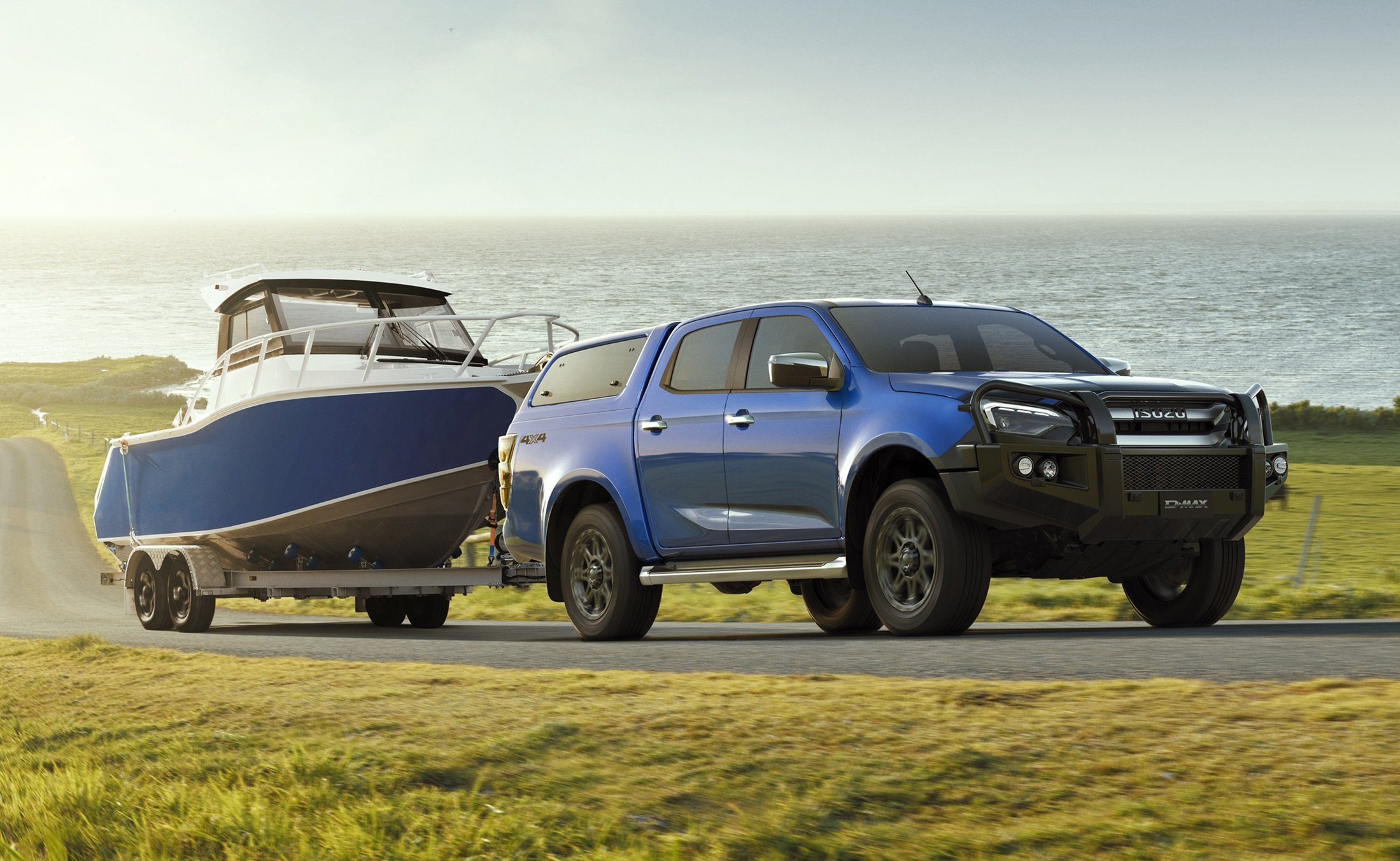

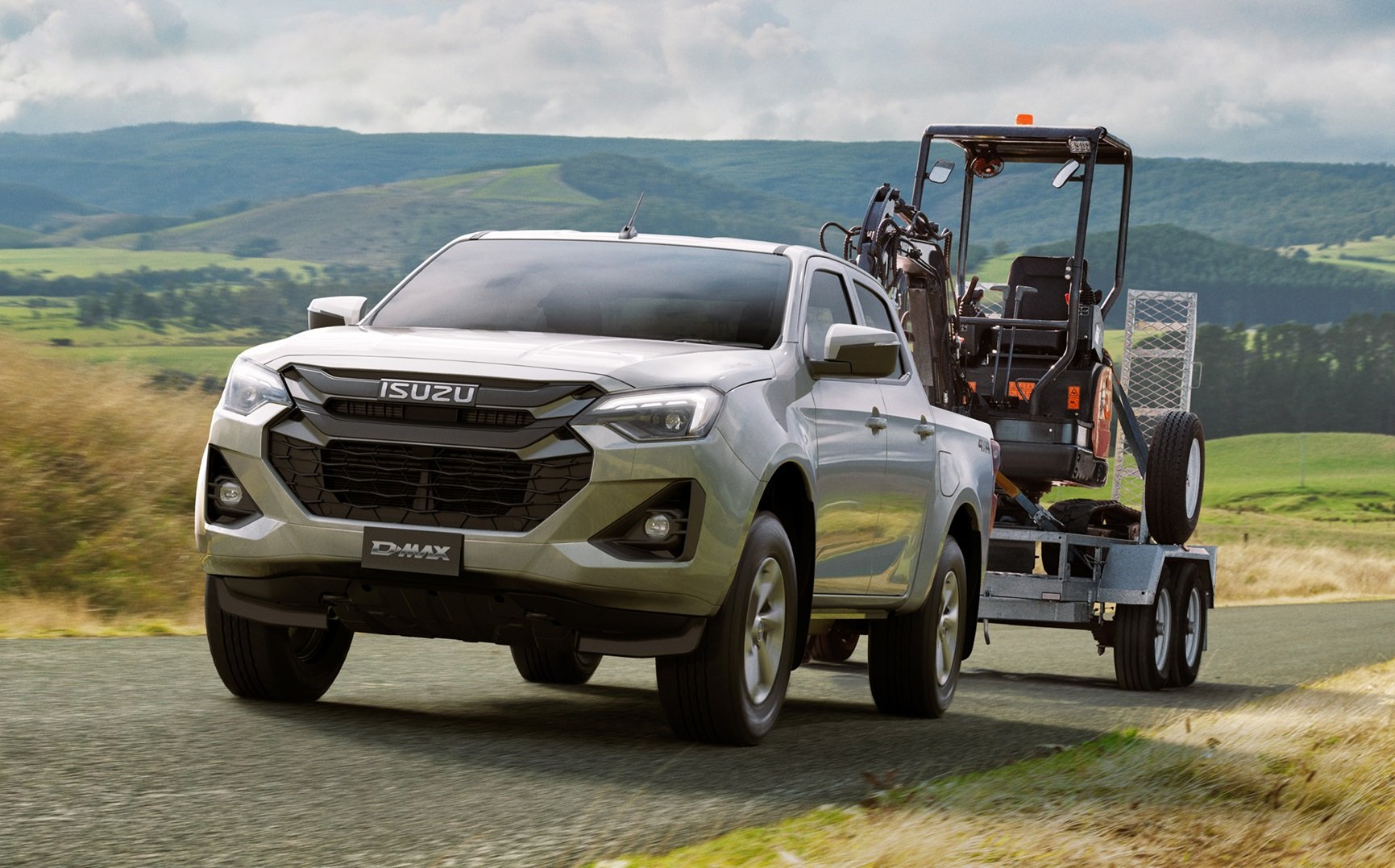
Really, towing ratings all come down to the gross combination mass. Being given the maximum 3500kg rating is not the full picture. Let’s take the top-spec X-Terrain as an example, and compare it against the Ford Ranger Wildtrak with the four-cylinder option, just so it’s fair. (Because the Ranger’s V6 murders the D-Max with towing grunt.)
The D-Max has a kerb weight of 2175kg and offers a gross combination mass of 6000kg, with a 3500kg max towing rating. Say you hook up a 3500kg trailer – which is not advisable on any vehicle with a 3500kg rating – you’re left with 325kg for passengers and cargo and anything else you want to carry. Not much, in other words.
Over in the Ford, its 6350kg combination mass and 2329kg kerb weight means you’re left with 521kg after hooking up a 3500kg trailer. That’s actually doable in terms of being able to take you and your fat friend, and some gear, down to your favourite fishing spot.
The critical point here is the working safety limit is much greater towing in the Ranger than it is in the D-Max. You’re much closer to the edge of the the stability and safety envelope towing that big, heavy trailer with a D-Max than you are with the Ranger. This isn’t even a specific criticism of the D-Max, it’s just the fundamental physics.
Where the 3.0L engine can come in handy is with engine braking. A smaller capacity engine, such as the 2.0L in the above Ford Ranger, is not able to provide the same level of engine braking because the sum of its compression pressure is lower than something with a larger volume of pressure. Both of these use a similar compression ratio as well; 16.3:1 in the D-Max and 16.1:1 in the Ranger.
So when you’re towing a heavy trailer down a long steep hill, the Isuzu engine is able to provide more engine braking to slow the whole outfit down compared with the 2-litre Ranger. This is a genuine advantage, especially towards the bottom of the hill. The Isuzu brakes won’t be cooking as hot as the Ranger’s brakes. Provided you’ve actually selected the appropriate gears manually.
INTERIOR
Inside, the D-Max cabin is pretty bare and basic. Sure, you’ve got a 9.0-inch touch-screen but even that is pretty small these days. And its operating system is about as advanced as Victor Frankenstein’s.
If you go for the X-Terrain you get some contrast stitching and vanity mirror lights, but overall this cabin doesn’t feel interesting or homely. Lots of the surfaces are made from hard plastics, with an unfriendly plastic bath for your phone to slide around in, and what seems like not enough cabin insulation; it’s a bit echoey and tinny inside
There doesn’t seem to be much love spread towards the driver or passengers. It’s as though it is literally a tool. A cold, hard tool designed for working only.
For some buyers – and probably the brand’s traditional fans – this is exactly what they want. It is a hard-wearing cabin so you tend to feel less sorry for the trim when you scuff your thick, muddy work boots up against the door card as you get in. And it doesn’t matter so much if your workmate spills his coffee all down the seat and into the black hole between the console.
Isuzu has added some creature comforts in recent times, with a leather gear shifter for the LS-U in MY23, Apple CarPlay and Android Auto even on the base SX, twin 2.1A USB ports on all, and heated seats for the LS-U+.
Isuzu makes trucks, so does the D-Max feel like one from behind the wheel?
It’s a fair question to ask, and pertinent. No dual-cab ute will feel as rough to ride in as a proper truck, but that’s because utes are a compromise. They’re designed and aimed for passengers first, but with underpinnings that allow for load carrying OR towing. They cannot be excellent at all these things.
Trucks are excellent at load carrying and towing because they’re specifically designed for that task. More on that below.
I'll help you save thousands on a new Isuzu D-Max here
Just fill in this form. No more car dealership rip-offs. Greater transparency. Less stress.
DRIVING
There’s nothing particularly glamorous about driving a D-Max, nor is it terrible. It drives basically the same way the BT-50 does, for obvious reasons. And that says something about the pricing situation being generally more than the Mazda. It’s not like you get a measurably better-driving ute for your extra cash.
Like any dual-cab ute, it is tuned in the suspension department for load-carrying. So bump and rebound when empty is somewhat harsh, although not terrible, and when laden it’s good without being excellent in the same way a proper truck is.
Keeping in mind that a dual-cab ute is a fundamental engineering compromise, you have to appreciate that you’re going to fit into one of two kinds of buyer/owner. You’re either going to be someone who cares how a vehicle handles, or you couldn’t give a rat’s arse. It either matters or it doesn’t.
If you don’t care how D-Max drives, then it’s going to be good enough, generally speaking. If you do care how it drives in both laden and unladen conditions, then consider that it’s going to behave pretty much exactly the same way as the BT-50. But you’re going to pay another $2000 for what is essentially the same vehicle.
What’s disappointing about the D-Max is that driving it in adverse sub-perfect conditions means you’re limited to two-wheel drive; rear-wheel drive, to be more precise. So you’re paying for all that off-road hardware, but can’t use it in heavy rain or on good-quality gravel roads owing to the primitive nature of its 4-wheel drive system. Not without risking driveline wind-up, that is.
Now, on the surface this isn’t necessarily a dangerous thing, and there aren’t a wave of D-Max owners all coming unglued out there at the first sign of maximum humidity. Certainly Queenslanders love D-Maxes and there hasn’t been a mass recall because they’re all fatally sliding off the road when things get moist, down there.
What it means is you can’t use it in effective all-wheel drive like you can with many other utes nowadays, like the Triton or Ranger. It’s the same fundamental design that you once got in a Holden Jackeroo back in the 1990s - meaning, Isuzu Ute (the passenger vehicle brand, not the trucking manufacturer) has not innovated its 4WD underpinnings since John Howard was in The Lodge.
So you’re stuck in rear-wheel drive and if you’re towing a heavy something with the kids in the back and a weekend’s camping gear in the tray and it suddenly pours, that’s not as stable a combination as it would be in a Triton where you can flick it to 4H at up to 100km/h, or a Ranger which has its clever clutch pack making it AWD.
DRAWBACKS
My primary concern for anybody buying an Isuzu D-Max is having to marry Isuzu Ute the brand, which was reiterated as recently as 2022, as the worst aspect to D-Max ownership.
Isuzu Ute Australia has only two vehicles to sell, D-Max and MU-X, yet head office decided to treat loyal customer Daryl Imray like a second-class citizen when it came to repairs on his D-Max under Australian Consumer Law.
What should’ve been a golden opportunity to win over Mr Imray and turn his frown upside down, by replacing a failed diesel injector pump, was instead used for blatant profiteering. It could’ve been a cheap part and securing of a long-lasting public relations connection for Daryl and every single person he spoke to about his D-Max henceforth - a lifelong Isuzu brand ambassador.
But IUA decided to deny his claim for technical support on a vehicle with exemplary service history that is only a year or so out of warranty but still covered by Australian Consumer Law’s acceptable quality guarantee.
My biggest concern and the reason AutoExpert does not explicitly recommend buying a D-Max is because you could end up as the next Daryl Imray. Isuzu Ute Australia too often chooses to see what they can get away with instead of doing the right thing by customers.
D-MAX IS NOT A TRUCK
Isuzu Ute has dialled back the blatant public rhetoric about its D-Max being a quasi-truck that can, metaphorically, tow meteorites and haul cubic metres of unobtanium.
Certainly, as a definitive towing platform and general-purpose workhorse, D-Max is an option, technically. It’s not a lemon, by any means, but it’s not perfect.
It uses an old 4WD driveline which, in High-4 and Low-4, means the wheels on one side of the vehicle travel in different trajectories than the wheels on the opposite side, meaning the whole thing can be damaged if you don’t relieve the binding forces the build up from driving on high traction surfaces.
Unlike several rivals in the 4X4 ute segment, D-Max does not have a centre differential to resolve these stresses in the driveline, unlike Mitsubishi Triton, for example. This alone might be a good reason to consider the new Triton >>
Similar conservatism needs to be applied in relation to towing capacity on a D-Max. Isuzu Ute is happy to plaster that ‘industry benchmark’ 3500kg/3.5 tonnes of braked towing capacity across its website and brochure, but that kind of assignment for a meek 2-tonne D-Max is an inherently dangerous idea. Here’s why towing 3500kg with a ute is bad >>
PROPER 4X4 TRUCKS
If you want a serious truck that is absolutely not fazed by your little dual-axle 3.5-tonne Taj Mahal caravan, or you have a small excavator that needs towing to-and-from jobsites, or if you have epic 4X4 adventures/misadventures that require doubles of every spare part, with unshakeable durability, reliability and practicality you can barely fathom - get a proper dual-cab off-road Isuzu truck.
Like one of these:
Isuzu Trucks Australia holds a genuine reputation in the trucking industry as one of the best for customer care. You won’t find yourself hammering out frustrated emails to head office complaining about some failed fuel injector pump at less than 200,000 kilometres, because trucks are built for serious work, not the easy-going approach of a passenger-licensed light-duty ute.
Also, proper trucks won’t be hampered by the aftermarket accessory toys you can’t help yourself with, and nor do utes get air suspension seats like trucks do. So there’s that.
You can’t break an Isuzu NPS in the same way you will break a D-Max if you mistreat it. And dealing with the trucking head office and dealerships is not the same as Isuzu Ute Australia. It’s an unspoken rumour that the trucking guys grit their teeth at having to be brand-associated with the passenger ute mob.
MAIN COMPETITORS
MITSUBISHI TRITON
Power: 150kW @ 3500 RPM | Weight: 2170 kg (kerb) | Power-weight ratio: 70 kW/t | Ground clearance 228mm | Wading depth 700mm | Payload (GSR) 910 kg | Tray length 1555 mm | Tray width 1135 mm (b/w arches)
PRO: Clever centre diff and all-wheel driveline allows high-traction surface use such as wet bitumen (unlike most other 4X4 utes), excellent value ($15K cheaper than Ranger equivalent), competitor rivalling towing capacity, more frugal than most comparative utes, new bi-turbo engine design seems quite reliable in-service.
CON: Driver stalking camera alert system needs to be less distracting (ruins an otherwise near-perfect ute).
Comment:
If you want the best fuel economy, equal towing capability, all-wheel drive 4H use on sealed roads (but in poor driving conditions) but you also want good brand support while also being a whopping $15,000 cheaper than the equivalent Ranger - Triton is unrivalled.
The nice wide tray is ideal if you have landscaping supplies to haul, while a good turning circle of 12.7m makes it more manoeuvrable than Cannon and Ranger. Triton also has a DEF exhaust fluid/AdBlue tank to treat the nastiest particles before they emit into the air.
Triton is also the only ute to be tested against the latest, more burdensome crash testing protocols, and yet can also offer a comfortable, practical interior that caters to both long-distance touring and daily-driver tradie commuter practicality.
CLICK HERE FOR MORE ON MITSUBISHI TITON >>
KIA TASMAN:
PRO: Premium interior, lots of modern equipment, 4A all-wheel drivetrain, affordable mid-spec variants, excellent customer support, factory-fitted brake controller, widest tray among rivals
CON: Lacks higher torque output of rivals for extreme towing, looks splay-eyed
Comment:
Tasman might have taken an eternity to finally arrive, but now that’s it’s here, it’s going to prove a compelling value proposition against the Mazda BT-50, Mitsubishi Triton and possibly even the Isuzu D-Max. Tasman might have a lot to prove to ute buyers like yourself, but the fact an SX+ costs $1000 less and already offers equipment on a BT-50 GT costing $66K.
Tasman does lots of clever little things like print the vehicle’s dimensions under the centre console lid, comes with a built-in electronic brake controller which means you not only have that function when towing, but you also don’t have to deal with a third-party in terms of warranty. Early examples seem to show it’s quite proficient off-road and decent for plenty of moderate and heavy towing situations; maybe not the fastest or noisiest, but good enough for most conservative drivers.
CLICK HERE FOR MORE ON KIA TASMAN >>
MAZDA BT-50
Power: 140kW @ 3600 RPM | Weight: 2208 kg (kerb) | Power-weight ratio: 63 kW/t | Ground clearance 240mm | Wading depth 800mm | Payload (SP) 892 kg | Tray length 1571 mm | Tray width 1120 mm (b/w arches)
PRO: Pretty reliable, good dealer network, sublime interior that makes you enjoy sitting in it, lots of model grade choice (almost too much choice…)
CON: Convoluted model range no longer includes manual gearbox, old style 4WD system doesn’t allow 4-High on-road use
BT-50 is a smart, good-value choice when it comes to buying a dual-cab 4X4 ute that needs to work hard every single day of its life without needing ‘all the toys’. It’s thousands of dollars cheaper than the equivalent D-Max it’s based off, while having a much nicer interior.
The 2025 model update has given it a more aggressive front end without getting silly with wheelarch extensions, snorkels and big stickers. The BT-50 does have that fairly reliable, 25-year old Isuzu engine with decent power outputs and a fairly robust 4X4 driveline, only you don’t have to deal with Isuzu Ute.
CLICK HERE FOR MORE ON MAZDA BT-50 >>
TOYOTA HILUX
PRO: Excellent resale value, fairly reliable, lots of dealers
CON: Expensive model range, more primitive 4WD system doesn’t allow 4-High on-road use, new 48-volt system could be problematic
Comment:
Hilux is the oldest ute platform in this group - and by significant margin. The last time Hilux was given a substantive update was 2018, even though Toyota Australia has tried to sex it up with the ‘GR’ pack.
Hilux has the best resale value, but that’s hinged on their religious brand presence in Australia. It’s a fairly bland ute with little to distinguish it from the rest, and in fact relies on the same primitive 4WD system as D-Max whereby 4H cannot be used on-road.
CLICK HERE FOR MORE ON TOYOTA HILUX >>
FORD RANGER
PRO: V6 towing grunt, all-wheel driveline system, heavy kerb weight makes towing safer at speed
CON: Below-average customer support from Ford Australia, expensive range
Comment:
Ranger is undeniably the most masculine ute on the market, and it certainly gets an all-access pass to every building site, every High Country campground and has the towing cajones for mass market appeal.
The reliability isn’t as good as it should be, and Ford Australia needs to up its game in terms of customer service, but at least you can drive it in 4H on high-traction surfaces such as in heavy rain or good-quality gravel backroads. Ranger is also very expensive, making the Cannon look like a bargain.
CLICK HERE FOR MORE ON FORD RANGER >>
CONCLUSION
Should you buy one?
The D-Max is a trustworthy package purely because there are no surprises. It is a bit boring in some ways but at least you know where everything is and you know how capable it is, because it’s not much different to the pre-MY23 version.
Isuzu offers a unique six-year/150,000 warranty on its vehicles in Australia. That’s one year more than what most competitors offer. And the starting prices, despite creeping up in recent years, remain fairly attractive when you line up the equivalent competitors.
But to answer this question with integrity (and a straight face) let’s balance out the appeal of D-Max with some of the most sobering factors you need to come to terms with, so that you go into this purchase decision with all the facts laid bare.


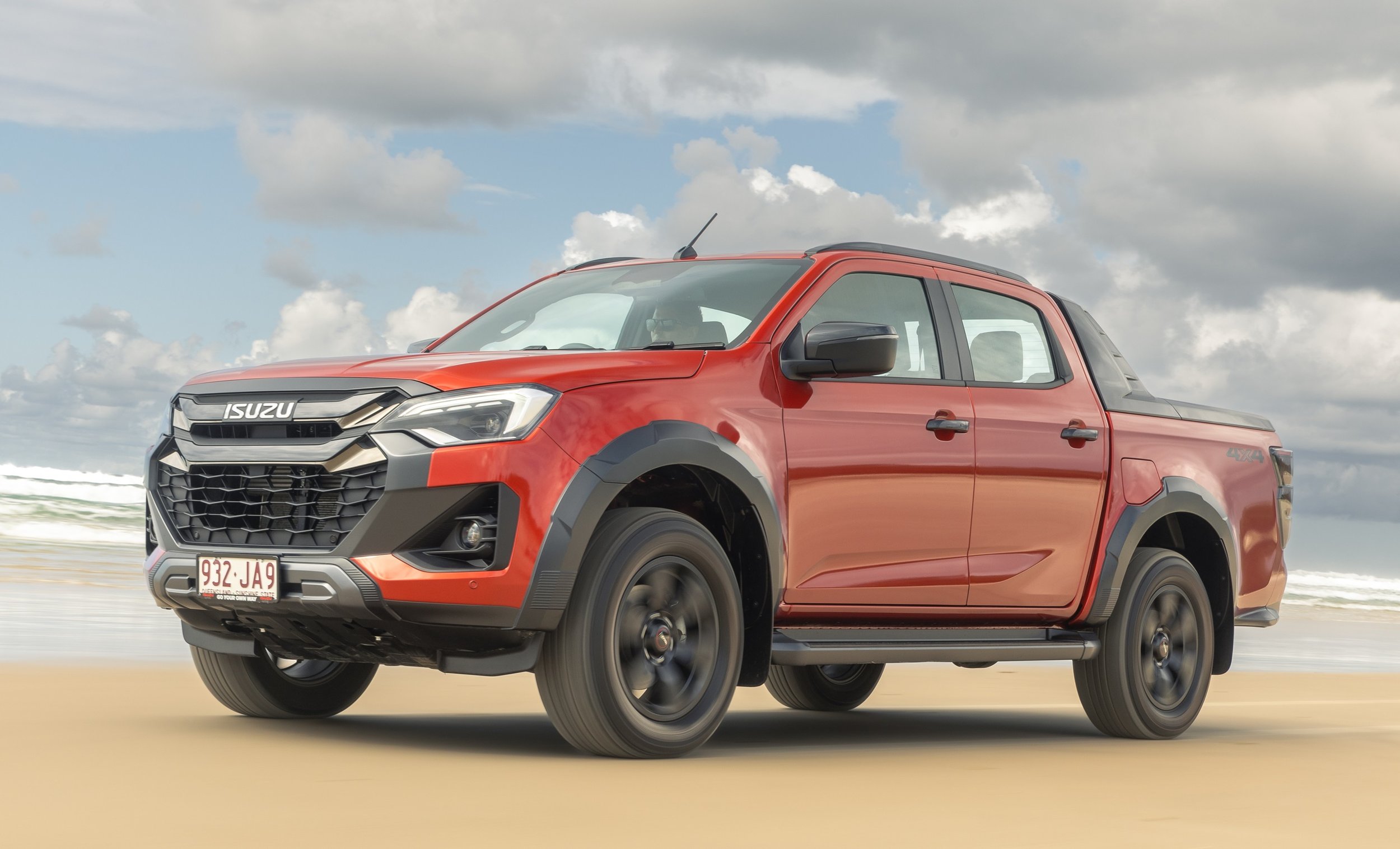

















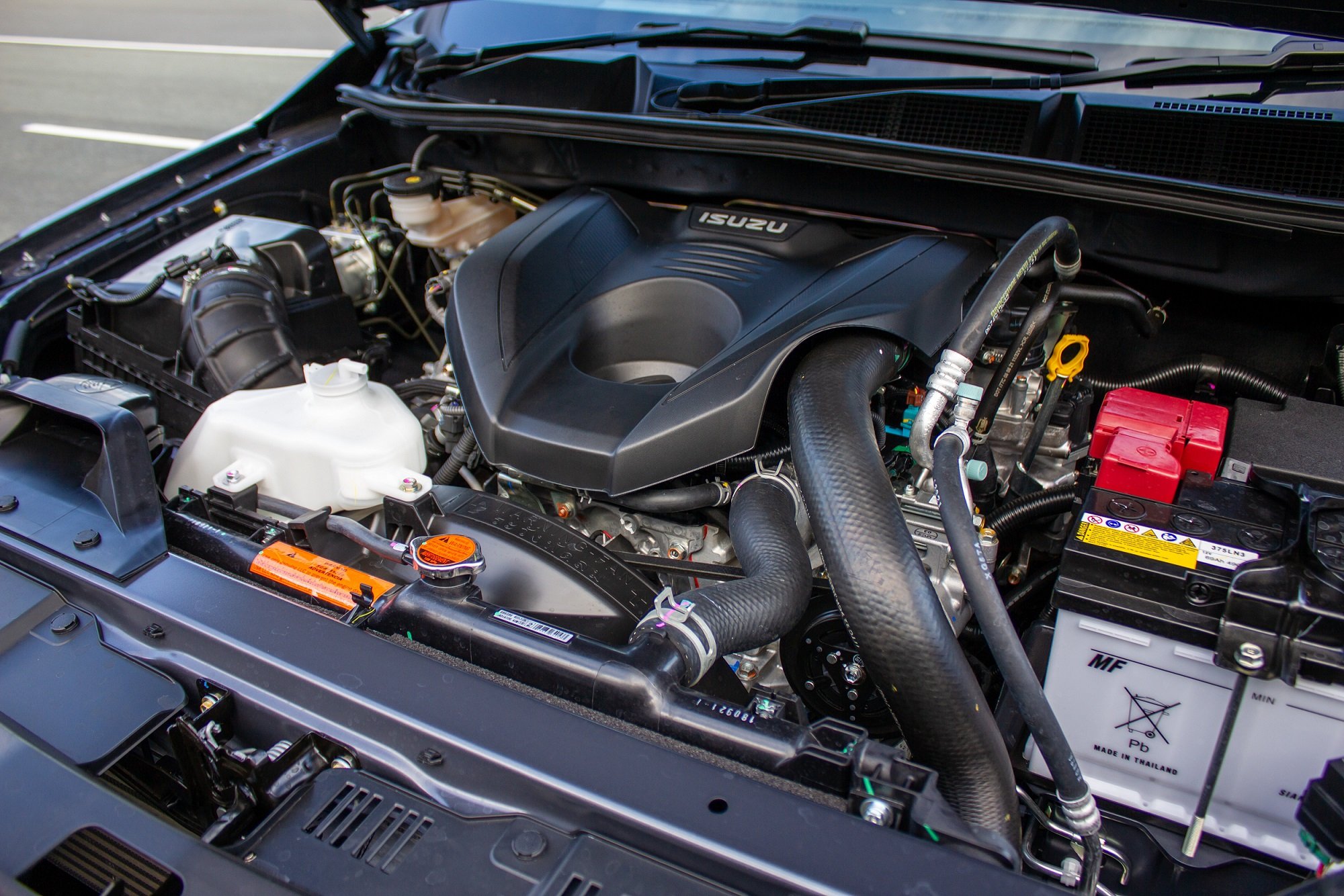




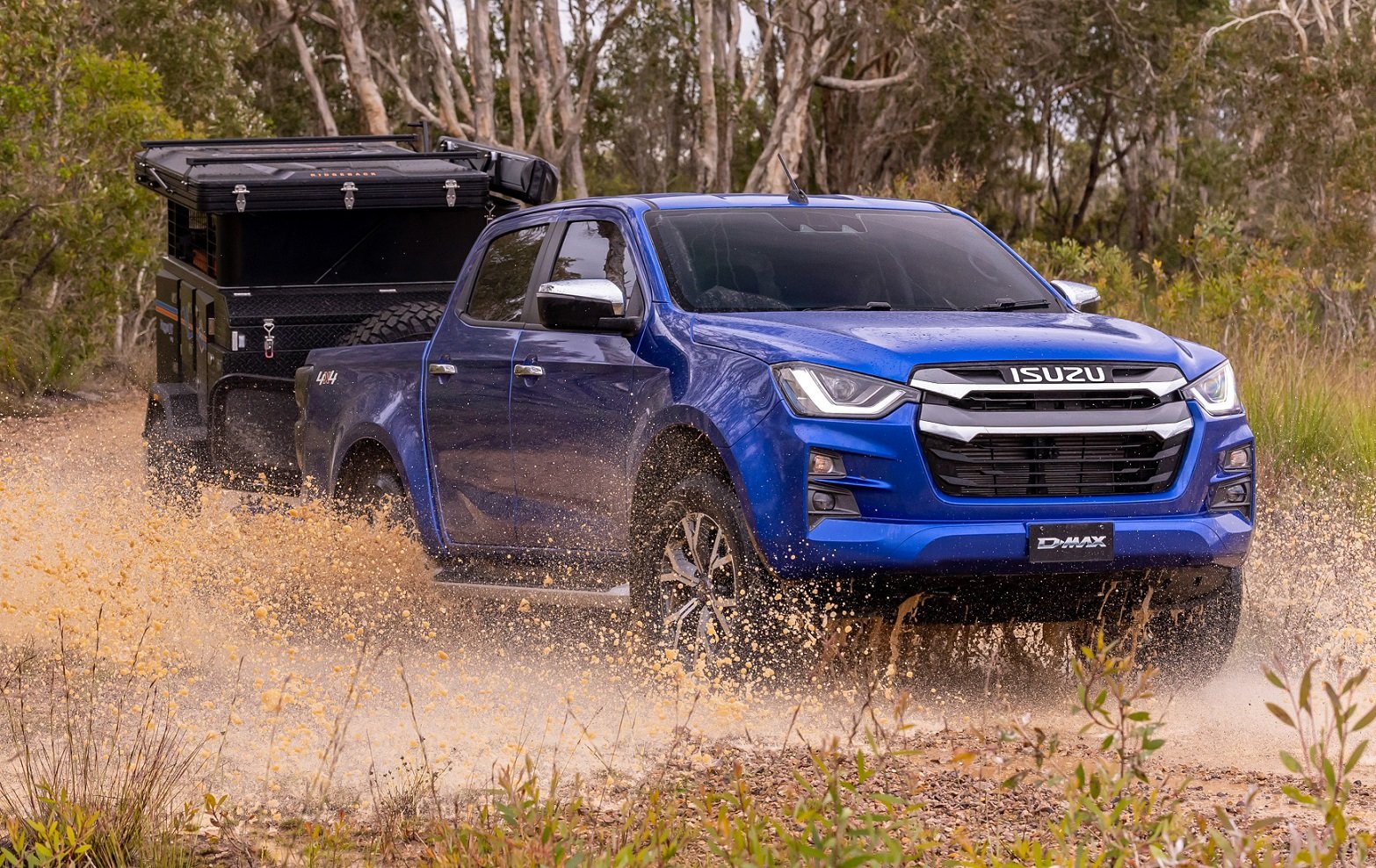
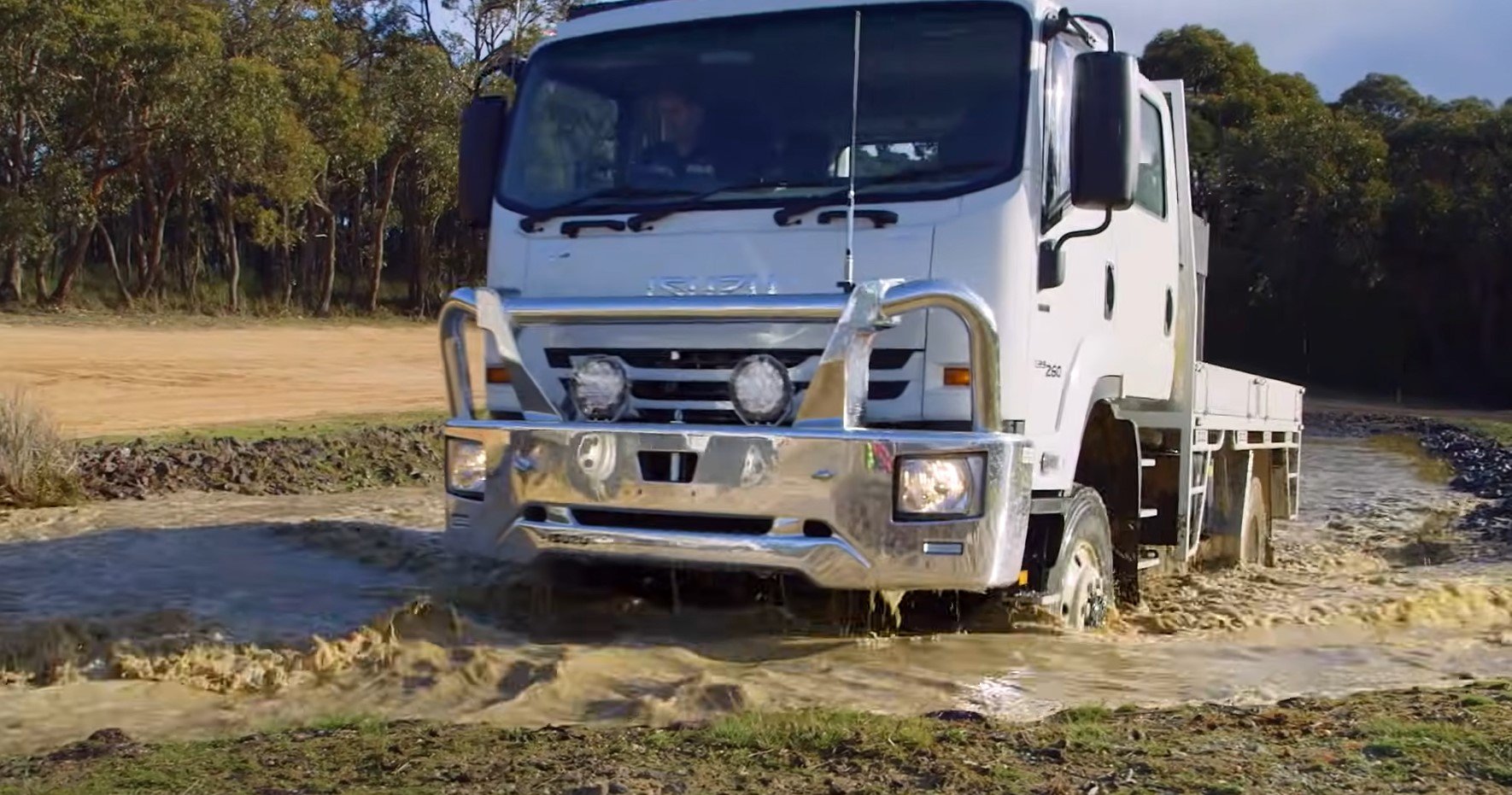

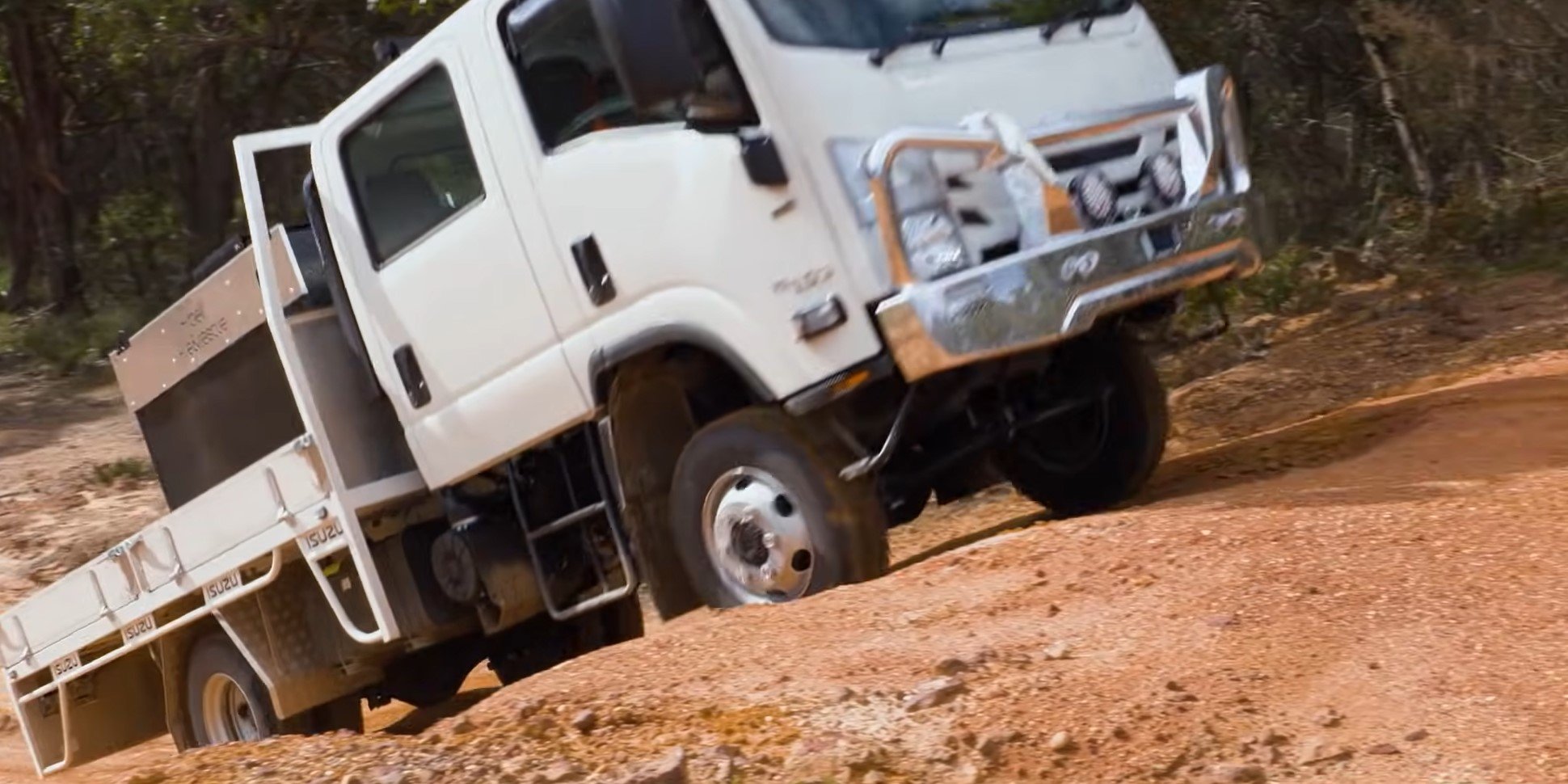
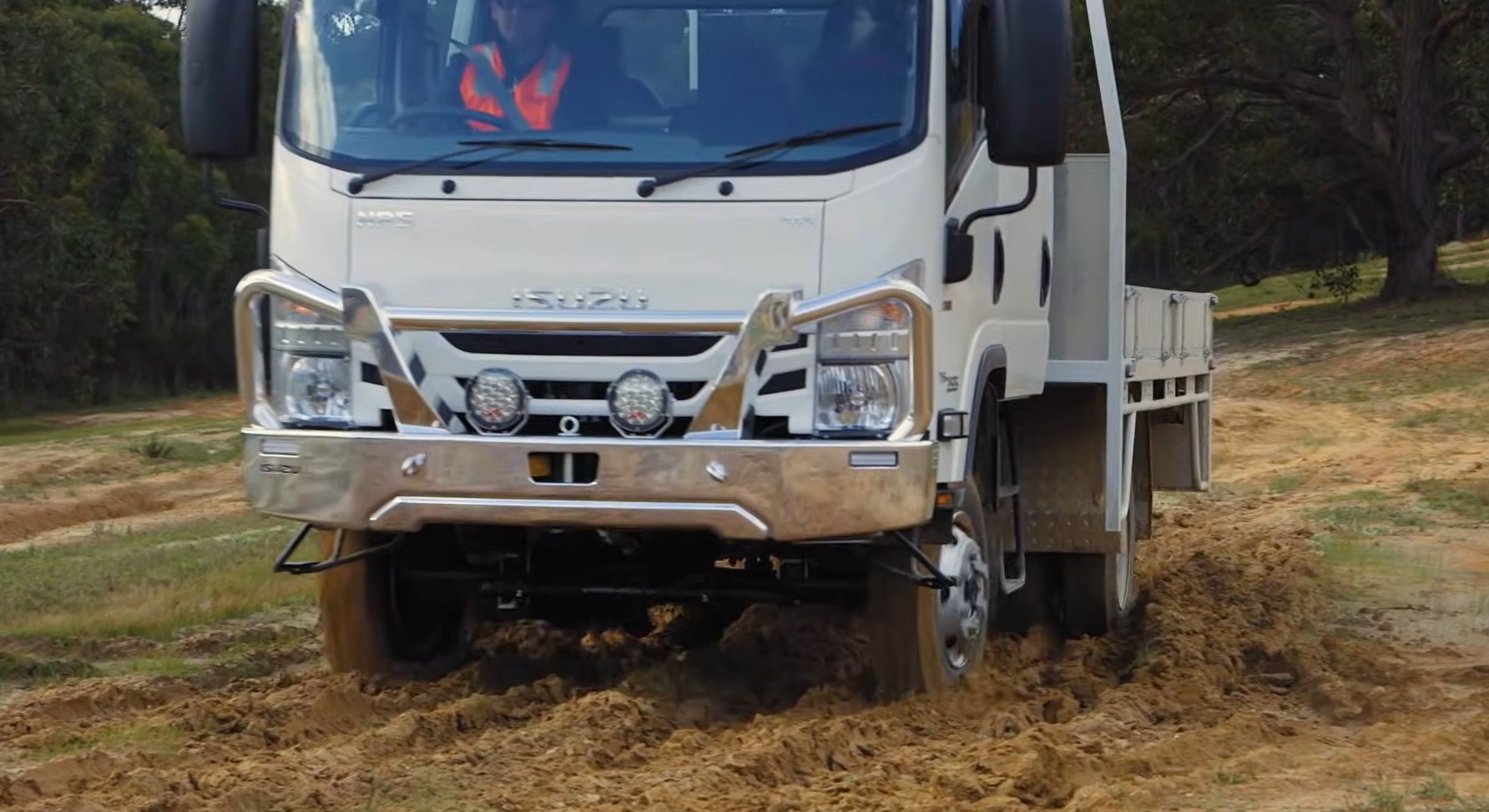


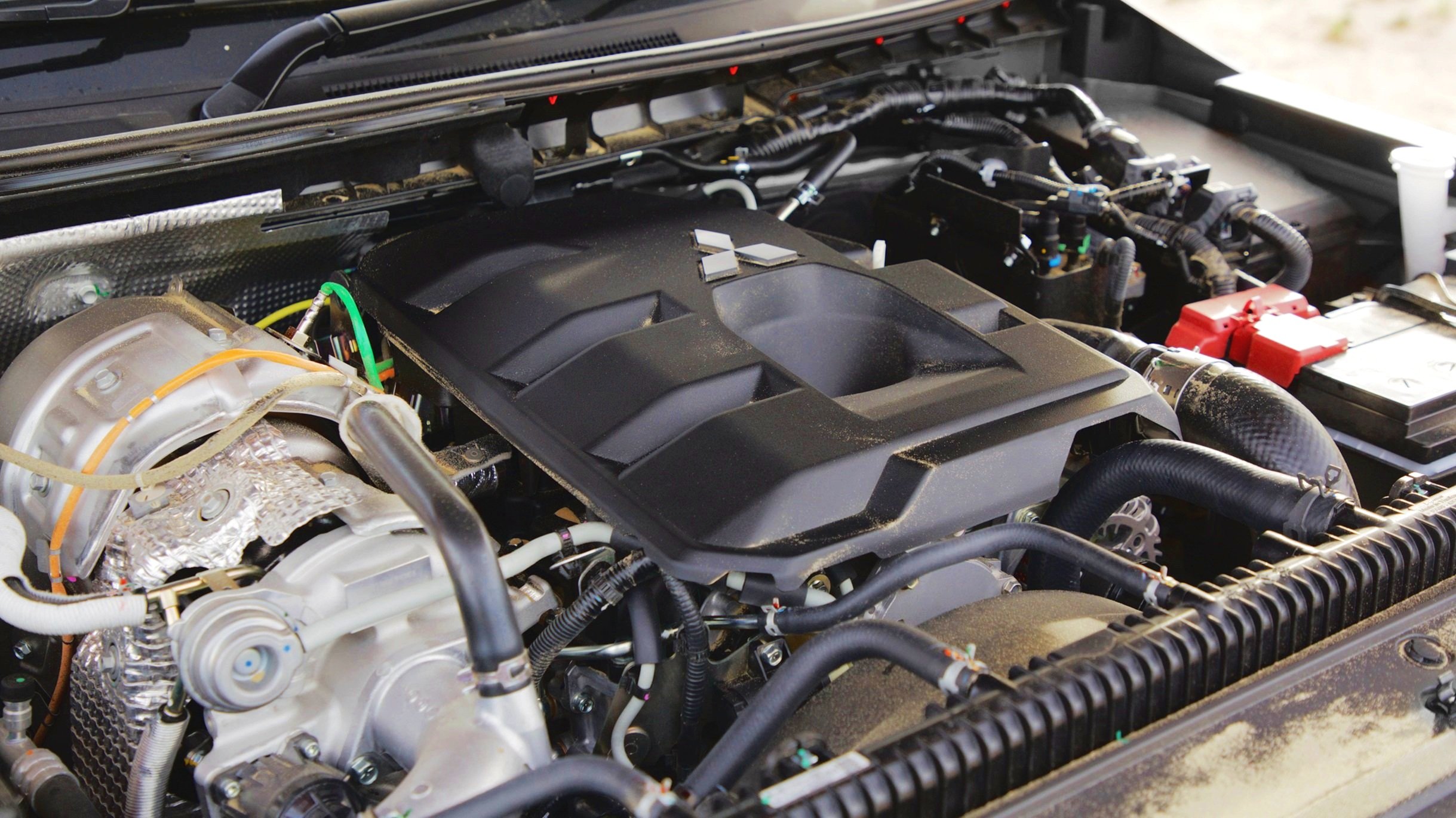





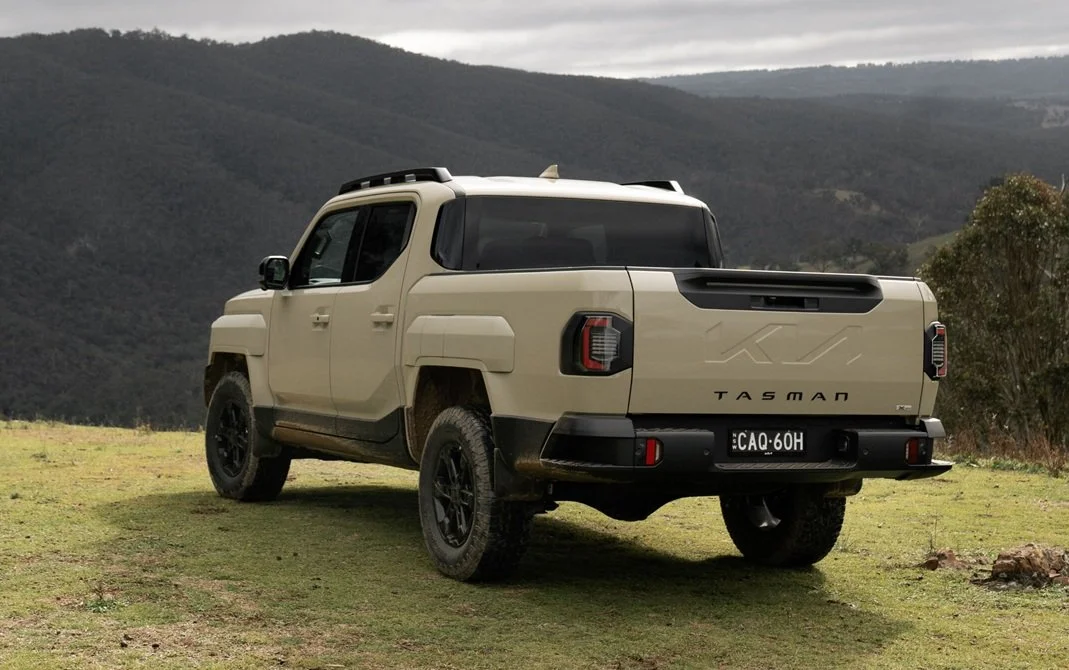










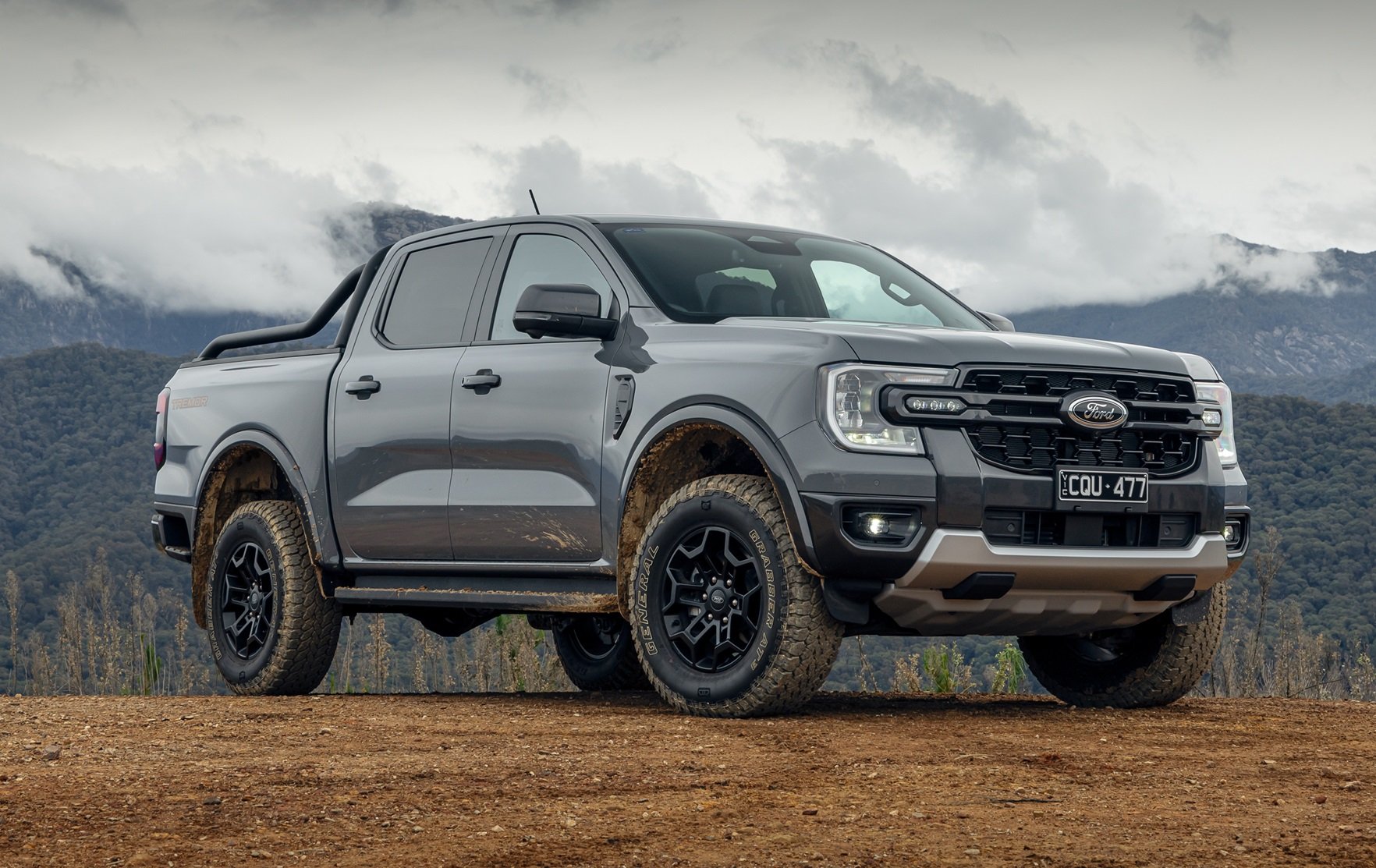

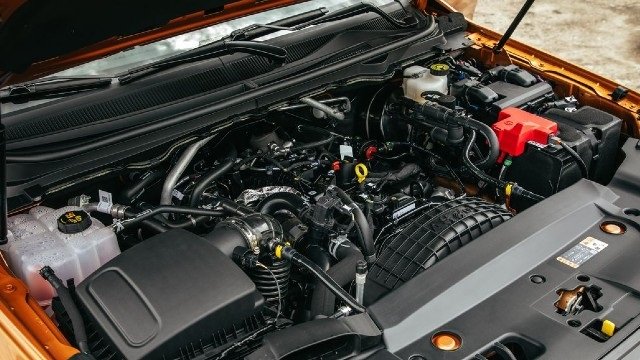






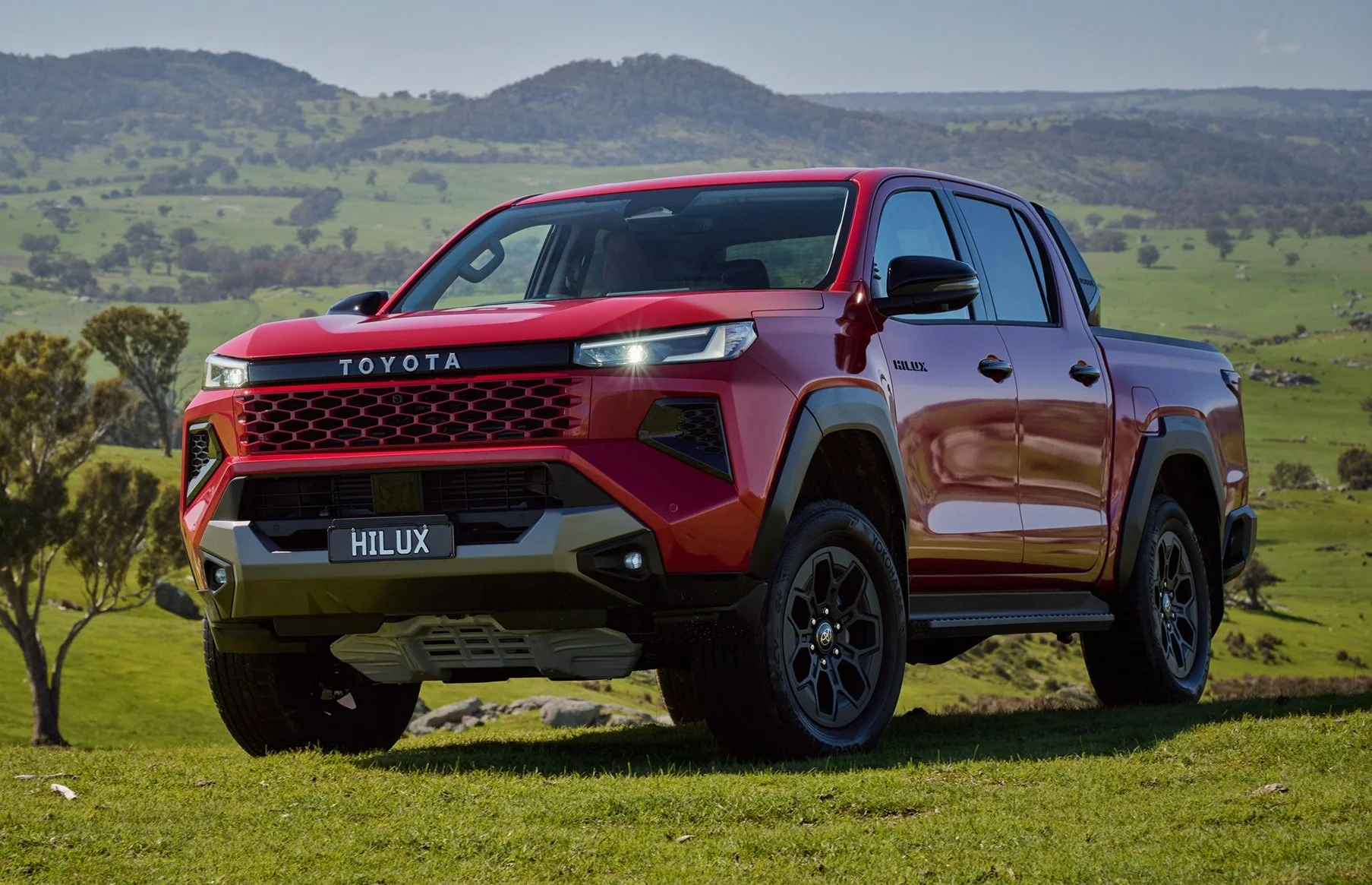






If you’re thinking about buying a small SUV, the Kia Seltos is a well-built, reliable example, with engine choices between ordinary daily commuting or sportier driving. See if the affordable, frugal Seltos is right for you.